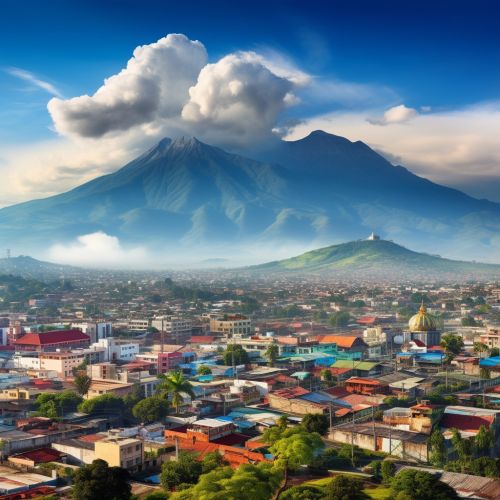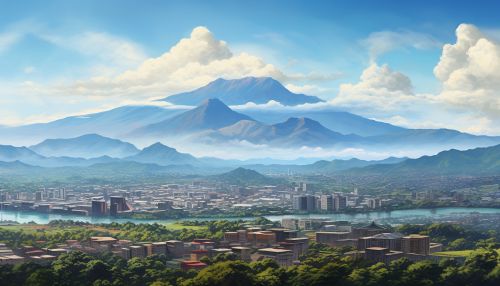Guatemala City
Geography
Guatemala City, officially known as Nueva Guatemala de la Asunción, is the capital and largest city of Guatemala. It is located in the south-central part of the country, nestled in a mountain valley called Valle de la Ermita. The city is situated at an elevation of 1,500 meters (4,900 feet) above sea level, giving it a relatively mild and temperate climate.


The city is divided into 22 zones (zonas), with Zone 1 being the historic downtown area with landmarks such as the National Palace and the Metropolitan Cathedral. Other zones are characterized by a mix of residential, commercial, and industrial areas.
History
The history of Guatemala City is marked by its establishment, destruction, and rebirth. The city was founded by the Spanish in 1776 as a replacement for Antigua Guatemala, which had been destroyed by an earthquake. The new city was designed with a grid-like pattern, a feature that is still evident in its street layout today.
The city has experienced several significant events throughout its history. The 20th century was particularly tumultuous, with the city undergoing rapid industrialization and urban growth, while also being a center of political unrest and violence during the Guatemalan Civil War.
Demographics
As of the latest census, Guatemala City has a population of over 3 million people, making it the most populous city in Central America. The city is a melting pot of cultures, with a diverse population that includes indigenous Maya, Ladino (mixed indigenous and European), and other ethnic groups.
The city is also the country's economic and educational hub, attracting migrants from rural areas seeking better opportunities. This has led to significant urban growth and the development of large shantytowns on the city's periphery.
Economy
The economy of Guatemala City is the largest in the country and accounts for approximately 60% of Guatemala's GDP. The city is a major hub for commerce, finance, and industry. Key sectors include manufacturing, particularly textiles and clothing, food and beverages, and pharmaceuticals.
The city is also a major center for services, including banking, telecommunications, and information technology. The Torre del Reformador, a notable skyscraper in the city, symbolizes the city's economic power and modernity.
Culture
Guatemala City is the cultural center of the country, housing many of the nation's museums, galleries, theaters, and music venues. The city is home to the Museo Ixchel, which showcases indigenous textiles, and the Museo Popol Vuh, which houses a collection of pre-Columbian art.
The city also hosts a number of cultural festivals and events throughout the year, including the Festival Internacional de Cine (International Film Festival) and the Feria de la Asunción, a large fair held in August to celebrate the city's patron saint.
Transportation
Guatemala City serves as the country's transportation hub. La Aurora International Airport, located in the city, is the largest and busiest airport in the country. The city is also connected to the rest of the country by a network of highways and bus routes.
Public transportation within the city is primarily provided by buses, including the Transmetro rapid transit system. However, traffic congestion is a significant issue due to the city's rapid growth and urbanization.
Education
The city is the educational center of Guatemala, home to numerous universities and higher education institutions. The Universidad de San Carlos de Guatemala, founded in 1676, is one of the oldest universities in the Americas and offers a wide range of programs.
Other notable institutions include the private Universidad Francisco Marroquín, known for its business and economics programs, and the Universidad del Valle de Guatemala, which specializes in science and engineering.
